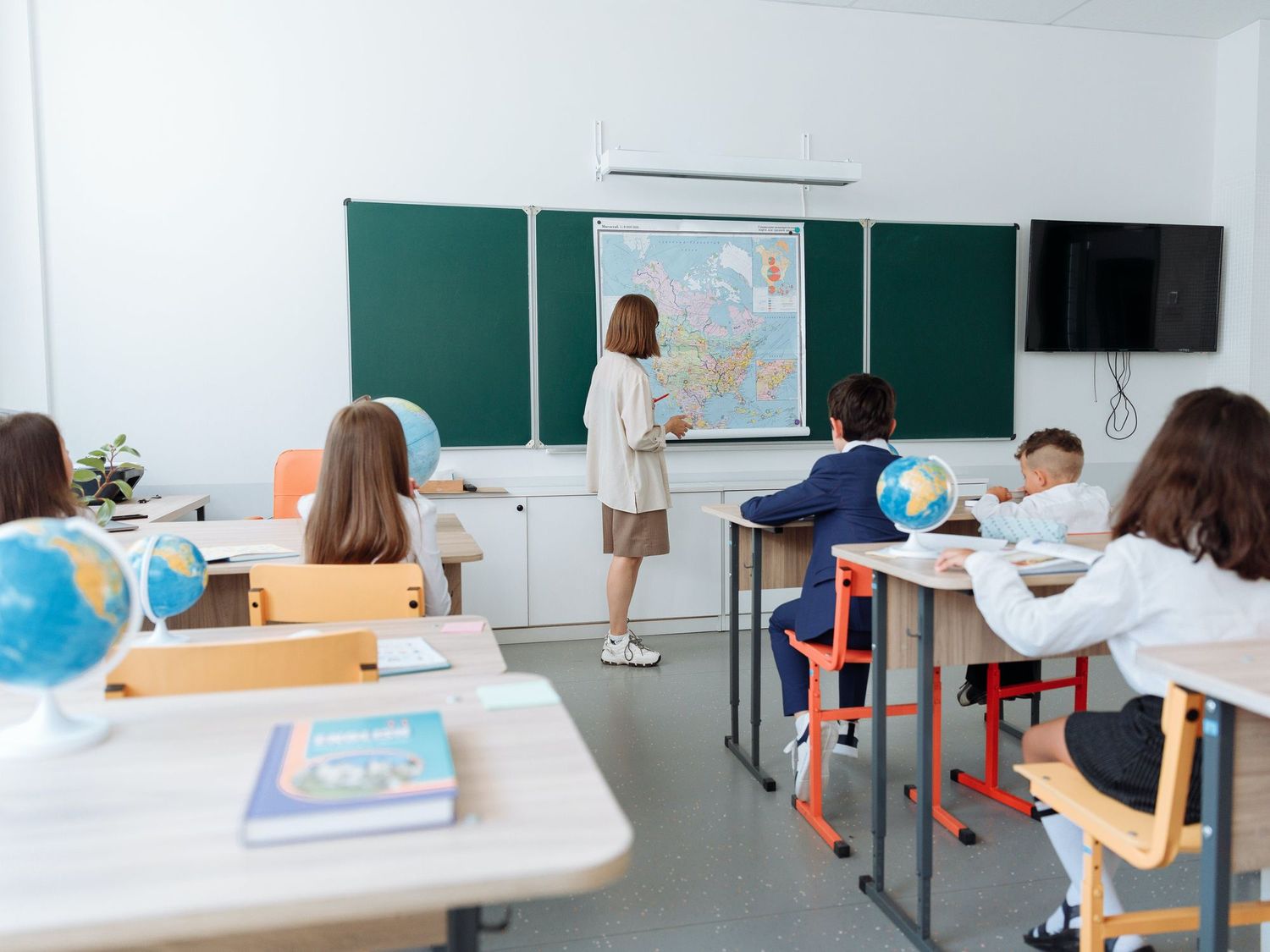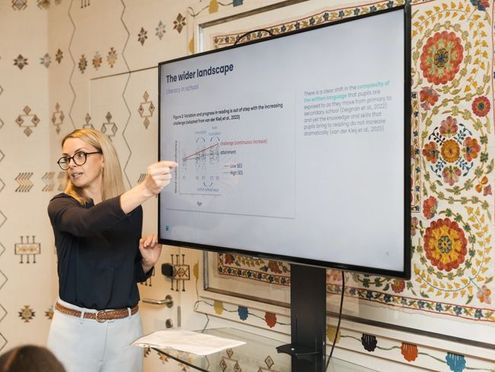If you’ve been working in education at any point over the past several years, chances are you have been told, perhaps through direct engagement with the Education Endowment Foundation recommendations, or perhaps mediated through your SLT, to ‘be a teacher of literacy in your subject’. You’ve probably heard the term ‘disciplinary literacy’ and you will almost certainly have picked up on the rising challenge to the notion that literacy in schools is solely the preserve of English teachers.
This is a good thing, but it’s not the full story.
In my privileged position of talking every day with schools across the country about their literacy strategies, what remains clear is that, for most schools, when it comes to practical strategies to operationalise disciplinary literacy in context, we are still a little thin on the ground. Teachers I speak to recognise and accept that ‘literacy is the concern of everyone’ and that they should be thinking about ‘teaching learners the language of their subject,’ but many are still left with the question of what that actually looks like in the classroom.
In this post, we’ll be asking that question, using Geography as a case study.
What is disciplinary literacy, anyway?
Historically, literacy has been viewed as a widely adaptable set of basic skills which, when mastered, can be applied in any situation that requires communication. However, this idea has been evolving in education circles and the assumption that these basic skills automatically translate into higher order disciplinary reading, of the kind we routinely expose learners to in KS4, is increasingly questioned.
A new orthodoxy is now firmly in place which asserts that each subject has its own specialised language, symbols, genres, and discourse conventions. Each subject has its own way of thinking about texts. Each subject has its own ways of constructing, evaluating and communicating knowledge. If we want, this new orthodoxy declares, for our learners to make that step up from basic reading to specialised disciplinary reading, we need to be ready to support them with explicit teaching of disciplinary norms in Science, in History, in Physical Education, in Geography.
If one thing is clear, it's that there is a need to expand literacy instruction upwards. That means refusing to accept that, once basic decoding and reading fluency is in place, that the job of literacy instruction is complete. It means reconceptualising literacy instruction so that it is a right for all students, not a necessity for some.
We need to, as a matter of urgency, identify what a more advanced literacy curriculum might look like and determine how it could best be implemented.
Apprenticing learners into the Geography ‘community’
Disciplinary language is used, by academics of all ages and levels of mastery, as a means of identifying oneself as a member of a meaningful group or community. Participation in such communities requires aspiring members to understand the various routines, vocabularies and discourse conventions that characterise the group.
So, what are the conventions that an apprentice Geographer must come to terms with? What are the features that characterise the community?
It’s a challenging question, and one that is sometimes easier to answer in the reverse. It’s harder to define and describe what a Geographer does sound like than it is to define and describe what one doesn’t sound like. This is what Kate Stockings was getting at when she complained about having ‘had enough’ of reading about ‘people who are poor’ and the country that ‘has money to spend on things’.
We complain about language like this every day in the staff room, but what kinds of language do we want to replace it with?
What does reading, writing, and thinking look like in Geography?
Students of Geography, like students of any subject, require access to a vast and wide-ranging vocabulary in order to cope with the cognitive demands of the subject, and to label concepts and ideas that are unique to the field. Vocabulary of this sort allows learners to replace ‘people who are poor’ with a phrase like ‘underserved community’ or ‘region of economic deprivation’. It allows them to replace ‘has money to spend on things’ with ‘high GDP per capita to invest on infrastructure’.
Putting aside the levels of specificity offered by the latter constructions for a moment, the ideas here are largely the same. ‘People who are poor’ is, roughly, the same thing as a ‘region of economic deprivation.’ However, it is clear that one manner of speaking is accepted by the Geographic community of practice, whilst the other belongs in the realm of adolescent mumblings. The bridge between the two? Tier 3 vocabulary. And that is our starting point for apprenticing our learners into our communities; consider and teach the words of our subject, check that they have learnt them, and teach them again, and again, until they are mastered.
But although disciplinary literacy in Geography might start with specialised vocabulary, it doesn’t end there. Geographical thinking and reading involves recognising the interconnectedness of different geographical content. Geographers are concerned with the local and the global. They are interested in how local and individual decisions can have an impact on a global scale. They are interested in exploring the relationships between history, economics, politics and the potential impacts on human beings and their movements.
Students of Geography need to be able to label, for example, a ‘destructive’ or ‘constructive’ wave, but also recognise the relationship between those waves and the sediment that lies on the beach. They need to understand the mechanics of a volcanic eruption, but to do so with half a mind to the impact on communities in the region. Geographers, in short, need to read with a variety of lenses, zooming in and zooming out in order to view processes from local and international perspectives.
Geographic literacy also involves spatial thinking. Learners must understand and interpret the patterns and spatial relationships of the phenomena on the Earth’s surface. This involves reading and analysing maps, a representative form that is so unique, so densely packed with symbols and codes, and so closely tied to the subject of Geography that it is almost synonymous with Geographic literacy.
As teachers of Geography, then, we need to be mindful of those strategies that come so naturally to us as subject experts. Next time you read a disciplinary text in the classroom, consider giving over a whole lesson to its exploration.
Pre-teach the words you think learners will struggle with, discuss the purpose of the text and its common conventions, invite anticipations of what we might be inclined to expect from a text of this sort and discuss the purpose of reading a text like this. After reading through once with fluency, try reading it again, this time narrating your expert thoughts as you go, making inferences, connections, and puzzling out anything that is particularly challenging. Once finished, ask questions to determine comprehension, but also invite and ask higher order questions that encourage learners to ‘think like a Geographer’ (so, not just ‘where is the place?’ but also ‘why do you think the place is here and not somewhere else?’).
What is offered here is not a sustainable template for engaging with every text you explore with learners, but the experience of hearing how an expert thinks whilst reading will be invaluable for those learners who have never heard it.
As a Geography teacher, what do I need to do about this?
I’m afraid there are no quick solutions to this one. Doing disciplinary literacy well takes time, but your starting point is to do some thinking and ask some questions.
- Use the ideas in this article to discuss what reading, writing and thinking looks like in the Geography classroom.
- Consider the diet of disciplinary texts you expose learners to. Could you do more? Are you affording enough time, especially when first encountering a text type, to explore the nature and purpose of the writing?
- Develop disciplinary vocabulary. Map out a tier 3 vocabulary curriculum and explicitly teach the words of your subject.
- Be unashamedly academic in calling out linguistic laziness in classroom talk. Don’t settle for ‘people who are poor’ without guiding the learner towards ‘region of economic deprivation.’ Insist on it. You may feel you are losing precious classroom time to be pedantic but, believe me, you will reap the rewards in the long run. If learners talk like Geographers in the classroom, they are far more likely to write like Geographers in the exam hall.




